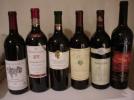
The Uses of Sorbic Acid
Sorbates have been shown to have inhibitory activity against a wide spectrum of yeasts, molds and bacteria and food applications of sorbates expanded rapidly after the issuance of the original patents in 1945. They are primarily used in a wide range of food and feed products and to a lesser in certain cosmetics, pharmaceuticals and tobacco products. It is produced and marketed in several forms. The soluble potassium sorbate is marketed as a powder or as granules. Sorbic acid is marketed in the dust-free crystalline form for food use or as a powder for feed use. Worldwide consumption in 1980 was around 1.4x104 metric tons.
The level of sorbate necessary for the preservation of a specific product depends upon a number of factors including the product composition (pH, moisture, etc.), the initial contamination level, packaging and storage temperatures. The preservative cannot be used to mask poor quality products or poor handling practices.
Here are a few specific applications with a few details:
| Wines - Sorbic acid is used in table wines to prevent secondary fermentation of residual sugar. The addition of sorbic acid affords protection against recontamination by yeasts that have been heated or filter sterilized, but at these low levels it does not provide adequate protection against undesirable malolactic and acetic acid bacteria. |
|
Dairy Products - The most common methods of application include dipping or spraying with potassium sorbate solutions for natural cheeses and direct addition for processed cheeses. For cottage cheese sorbic acid is added to the cream dressing before pasteurisation.
 |
Seafood - Sorbates are used in a number of ways to extend the shelf life of fish. For smoked or dried fish, the fish are dipped into potassium sorbate solution prior to drying or smoking. This inhibits the development of yeast and mold in the finished product. For fresh fish the sorbates can be incorporated into the ice , refrigerated seawater of ice water slush in which the fish are packed. |
Fruit and Vegetable Products - Sorbates are applied as a fungistat for prunes, pickles, relishes, maraschino cherries, olives and figs. The same levels extend the shelf life of prepared salads ,eg, potato salad, coleslaw, tuna salad, etc. In the fermented vegetables, it is used to retard yeasts during fermentation.
Bakery Products - Sorbates are used in and/or on yeast-raised and chemically leavened bakery products. The use of sorbates in yeast raised products at one fourth the level that is normally added provides the same shelf life without adversely affecting the yeast fermentation. Sorbates added at one tenth the propionate level reduces the mix time by 30%. This internal treatment is used in combination to an external spray of potassium sorbate to increase the shelf life of bakery products.
Meat and Poultry - For fresh poultry, a dip in potassium sorbate significantly reduces the total number of viable bacteria and doubles the refrigerated shelf life. Country-cured hams sprayed with sorbate solution result in no mold growth for 30 days.